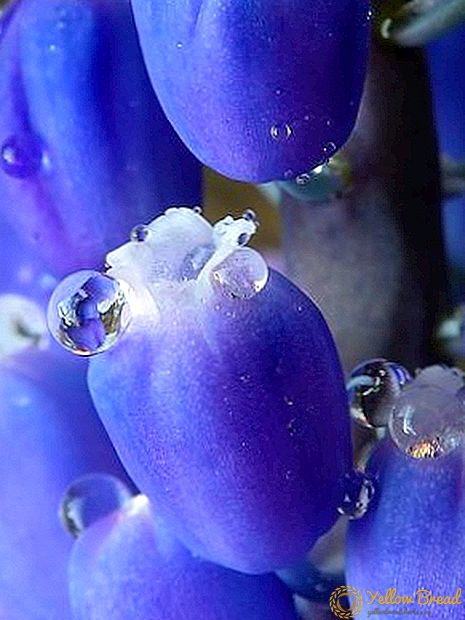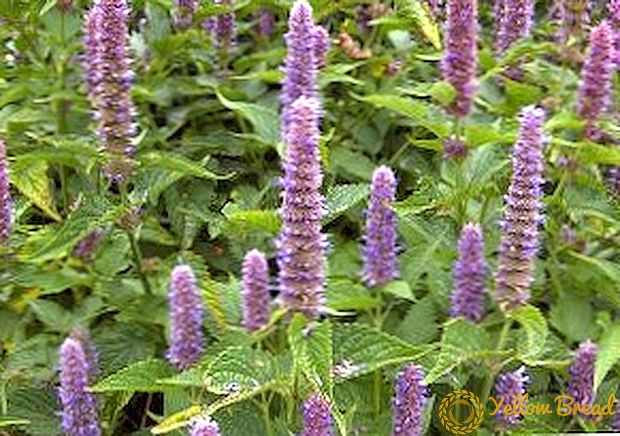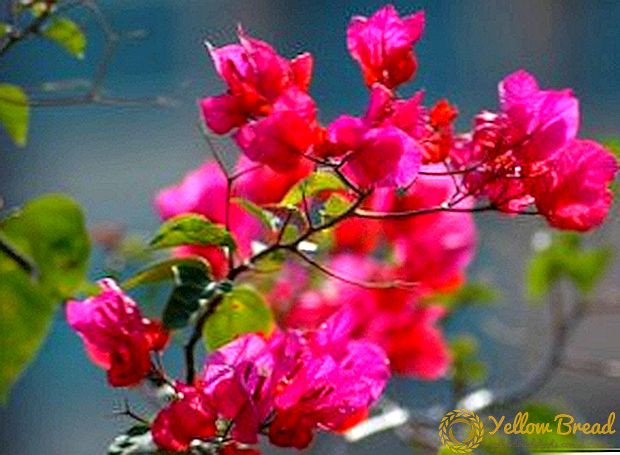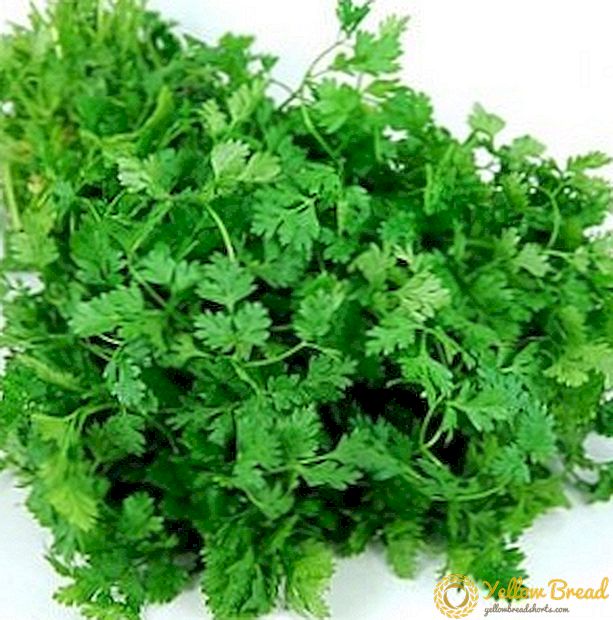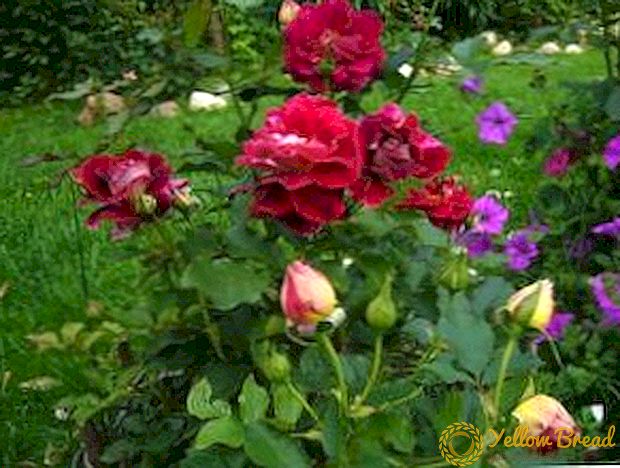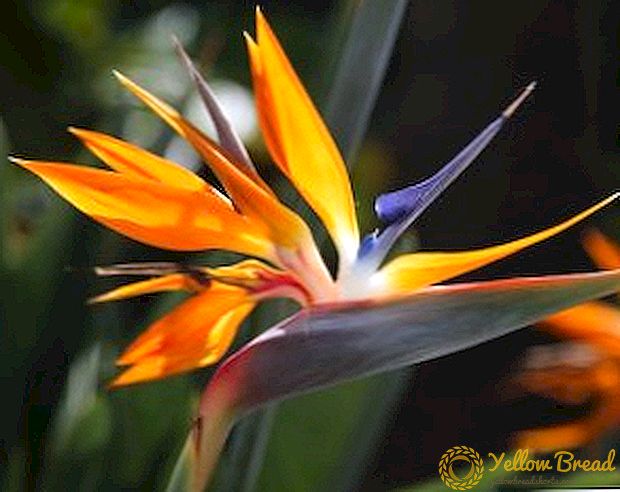 People who grow vegetables in their garden often face their various diseases. Tomatoes are no exception and can be affected by the fungus Alternaria, which causes such a disease as Alternaria.
People who grow vegetables in their garden often face their various diseases. Tomatoes are no exception and can be affected by the fungus Alternaria, which causes such a disease as Alternaria.
Consider in our article what it is and how to treat this disease.
- Description
- Causes and pathogen
- Resistant varieties
- First symptoms and danger
- Treatment of dry blotch
- Prevention
Description
Alternaria - a disease that has other names: macrosporosis, brown spot, dry spot. It is a very harmful and common disease of tomatoes.
Alternaria develops on all aboveground organs of the plant, starting from the bottom and then moving upwards. Tomatoes growing in the greenhouse, white spots on the leaves can be seen most often.  Concentric round spots about 7 mm in diameter appear at the site of injury. Later they are drawn out and can reach 17 mm. At the next stage, the leaves die off when the affected areas merge and cover most of the leaf, and at high humidity they begin to become covered with a dark bloom.
Concentric round spots about 7 mm in diameter appear at the site of injury. Later they are drawn out and can reach 17 mm. At the next stage, the leaves die off when the affected areas merge and cover most of the leaf, and at high humidity they begin to become covered with a dark bloom.
In the form of ringing long spots, the disease manifests itself on the petioles, and on the stems there are spots covered with velvety patina and having a clear contour. Later the tissues die off - the stems and petioles dry and then break. On the fruits themselves appear dented round spots near the stem, with black plaque. The fungus is able to penetrate deeply and hit the seeds. They darken and lose their germination. Tomatoes fall down, not yet having time to ripen. Or vice versa, they ripen prematurely, but at the same time they have a small mass.
How does alternarioz tomato, you can see in the photo below. 
Causes and pathogen
The causative agent of Alternaria is Alternaria solani Sorauer. This fungus spreads with air masses and actively develops in moisture at a temperature of 25-27 ° C.
Consider what is Alternaria alternata. It is a representative of mold fungi that form spores. This fungus is found only on ripe fruits that are damaged, frostbite or long stored.  Causes of tomato infection:
Causes of tomato infection:
- hot summer, changes in daytime temperature with nighttime affect the development of the disease;
- frequent rains contribute to the active development of the fungus;
- mechanical damage promotes infection;
- the source of infection is infected seedlings or seeds;
- contaminated soil causes crop disease.
Resistant varieties
For sustainable varieties include:
- Aurora F1;
- Ray;
- Sanka;
- Hope F1;
- Liang;
- Golden Bullet;
- Alex hybrids.
First symptoms and danger
The first symptoms of the disease are observed at the stage of planting seedlings in the ground. Alternaria is manifested in the form of small spots on the lower leaves of the culture. The incubation period of the causative agent is about 3 days. And then he begins to actively grow and spread. The disease is considered very dangerous, as it gradually affects the entire culture, if not in time to begin treatment. Alternariosis causes the death of up to 85% of the entire crop of tomatoes.
The disease is considered very dangerous, as it gradually affects the entire culture, if not in time to begin treatment. Alternariosis causes the death of up to 85% of the entire crop of tomatoes.
Treatment of dry blotch
The treatment of tomato macroscoporosis involves treating the culture with fungicides. It is recommended to treat the plant when the first symptoms of the disease appear.
Consider what to do if white spots appear on the leaves on the tomatoes. Contact effect fungicides, such as Antrakol 70 WG, Ditan M-45, give a good effect. And also well help system drugs, such as "Flint", "Infinity", "Kvadris", "Ridomil Gold MC". Treatment should be carried out every 2 weeks. During the season it is recommended to spray the crop 3-4 times. 
Prevention
You can prevent the occurrence of Alternaria, if:
- remove all plant residues from the soil after harvesting;
- disinfect the soil;
- make mineral fertilizers that contain potassium in the soil;
- time to destroy infected plants;
- choose varieties that are resistant to the disease;
- watering the crop at the root, tie up tall varieties, remove the leaves of the lower tier;
- observe crop rotation.
To prevent the disease of tomatoes, it is recommended to spray the culture with biological preparations, such as Trichodermine, and Fitosporin, even before the onset of Alternaria.If you follow all the rules when planting tomatoes and adhere to preventive measures, then no diseases are not terrible for tomatoes.

